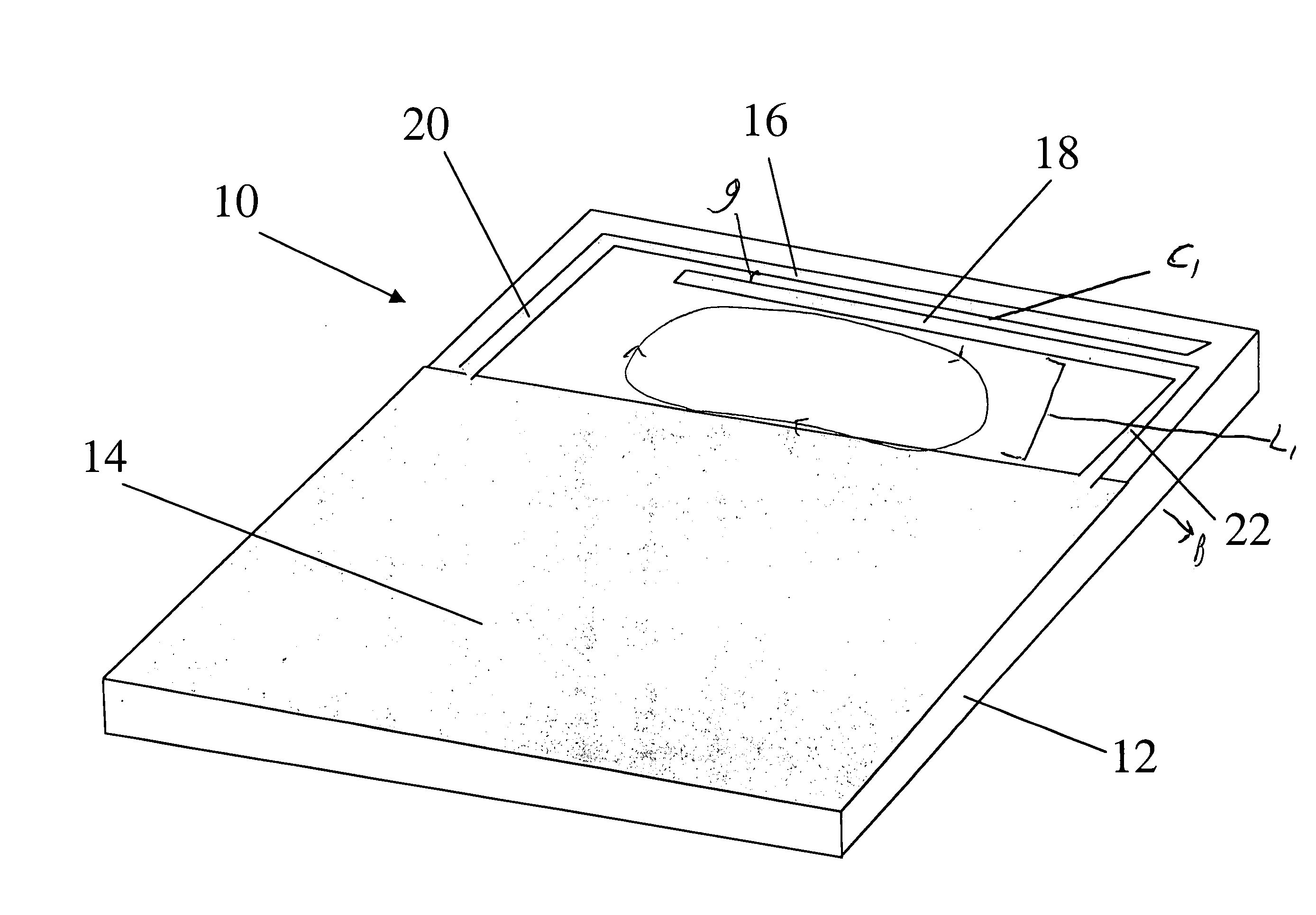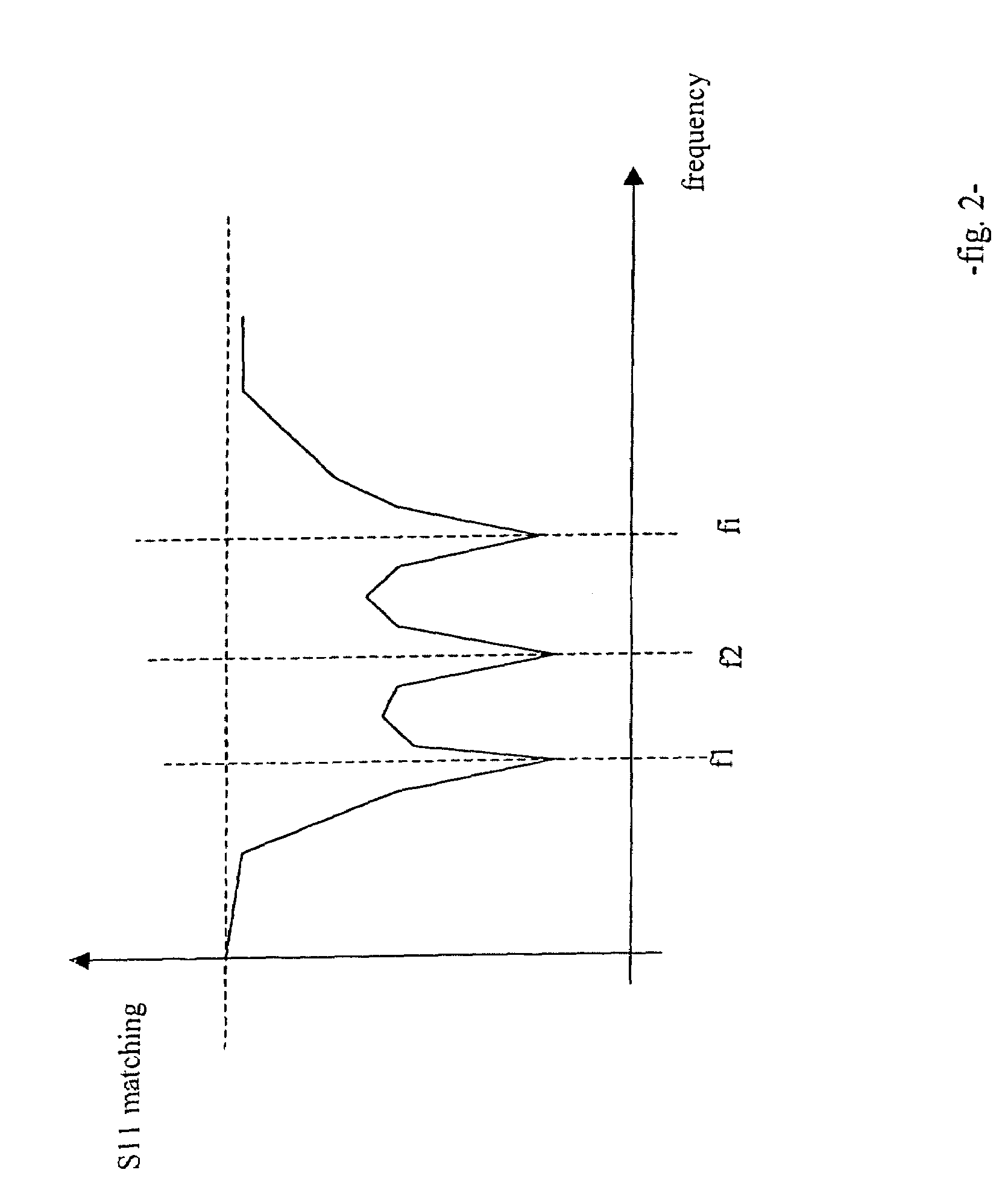Multi frequency magnetic dipole antenna structures and method of reusing the volume of an antenna
a magnetic dipole antenna and multi-frequency technology, applied in the direction of loop antennas, radiating element structural forms, resonance antennas, etc., can solve the problems of polarization loss, partial loss of signal, and impaired reception and/or transmission, and achieve the effect of increasing the ratio of relative bandwidth to volum
- Summary
- Abstract
- Description
- Claims
- Application Information
AI Technical Summary
Benefits of technology
Problems solved by technology
Method used
Image
Examples
Embodiment Construction
[0039]The volume to bandwidth ratio is one of the most important constraints in modern antenna design. The physical volume of an antenna can place severe constraints on the design of small electronic devices. One approach to increasing this ratio is to re-use the volume for different modes. Some designs already use this approach, even though the designs do not optimize the volume to bandwidth ratio. In these designs, two modes are generated using the same physical structure, although the modes do not use exactly the same volume. The current repartition of the two modes is different, but both modes nevertheless use a common portion of the total available volume of the antenna. This concept of utilizing the physical volume of the antenna for a plurality of antenna modes is illustrated generally by the Venn Diagram of FIG. 1. The physical volume of the antenna (“V”) has two radiating modes. The physical volume associated with the first mode is designated ‘V1’, whereas that associated w...
PUM
 Login to View More
Login to View More Abstract
Description
Claims
Application Information
 Login to View More
Login to View More - R&D
- Intellectual Property
- Life Sciences
- Materials
- Tech Scout
- Unparalleled Data Quality
- Higher Quality Content
- 60% Fewer Hallucinations
Browse by: Latest US Patents, China's latest patents, Technical Efficacy Thesaurus, Application Domain, Technology Topic, Popular Technical Reports.
© 2025 PatSnap. All rights reserved.Legal|Privacy policy|Modern Slavery Act Transparency Statement|Sitemap|About US| Contact US: help@patsnap.com



